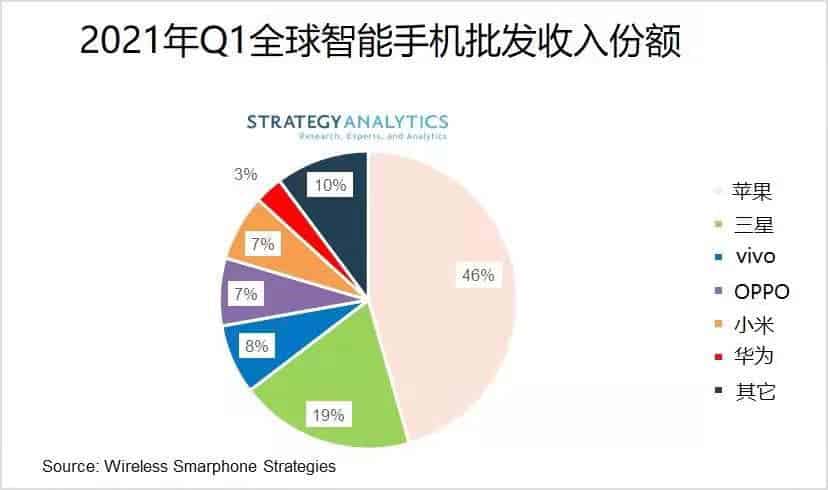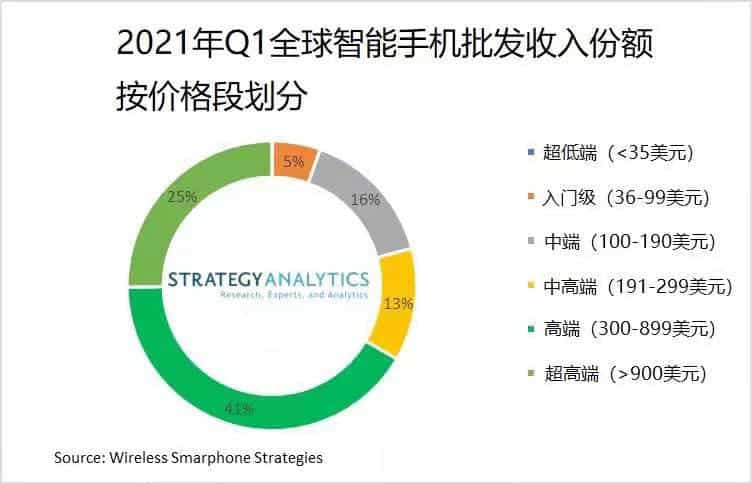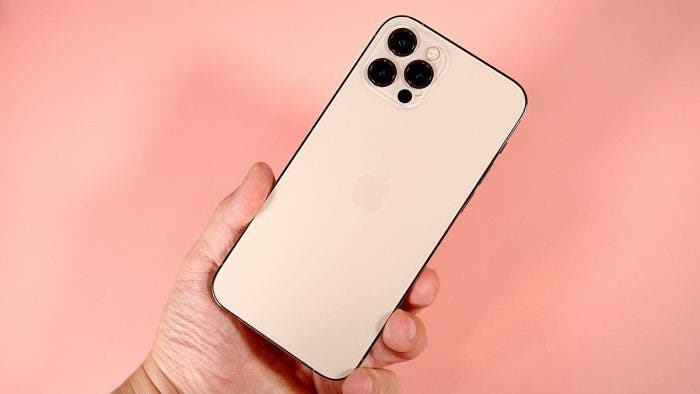According to the latest research report released by Strategy Analytics, the total global smartphone wholesale revenue in Q1 2021 will exceed US$100 billion, a year-on-year increase of 37%. But there are only a few main players such as Apple and Samsung.

Strategy Analytics pointed out that Apple (46% share) and Samsung (19% share) still maintain a clear leading position in terms of revenue. Both contributed 65% of the revenue in the quarter; VIVO surpassed Huawei with an 8% revenue share, (up from 5% in the same period last year) occupying the third place for the first time; OPPO and Xiaomi each accounted for 7% of global smartphone revenue; Huawei only accounted for 3% of global smartphone revenue in the first quarter.

Also Read: Xiaomi Sold More Than 10 Million Premium Smartphones In 2020
Strategy Analytics also pointed out that 25% of the global smartphone market’s revenue in this quarter came from ultra-high-end smartphones with a wholesale price of more than US$900. Apple and Samsung dominate these lucrative market segments. Apple and Samsung dominate this segment almost entirely; VIVO ranks first in the price range of US$400 to US$499; OPPO leads the US$191 to US$299 price range niche; TRANSSION maintains its leading position in the entry-level (US$36 to US$99).
Why People Still Prefer Premium Phones From Apple And Samsung?
David Kerr, Senior Vice President added, “The super-premium category where the top flagships from Apple and Samsung have almost total control offers great brand halo benefits, but is quite small at only 25 million units in Q1 2021. Opportunities for challengers to gain share are limited without huge investments over several decades and hundreds of millions of positive user experiences in addition to strongly competitive products.”
He also added, “Challenger brands like Xiaomi, Oppo, Vivo and others will battle for volume and prominence in the mid and high tiers, which collectively account for almost half of smartphone shipments. The Huawei case study (before politics intervened) presents an excellent roadmap on how to leverage the halo effect. Offering flagship devices with top notch features and technologies in select models along with major sponsorships, brand ambassadors and technology partners is a winning long-term formula.”





